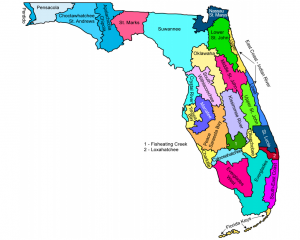Water is essential to life on this planet. It is not only essential for humans, but plants and wildlife rely on it for survival as well. You probably remember learning the water cycle, but did you know you’re currently standing in a watershed?
The Water Cycle
As a refresher, the water cycle is the movement of water through earth’s oceans, land, and atmosphere. The main way water returns to the atmosphere is through the evaporation of water from oceans. Evaporation occurs when water molecules change from a liquid to a gas. Precipitation through rain or snow brings the water back to the earth. It runs off land into streams, rivers, or lakes or it infiltrates down into the ground.

Watersheds
Water, like anything else on Earth, follows the law of gravity. It flows downhill in streams and rivers until it reaches the oceans at sea level. You may have heard the term “watershed,” but did you know you don’t have to live near a lake or river to be in a watershed? A watershed contains all land where when water falls on it, it flows into the same waterbody. Larger watersheds (like the Everglades) contain several smaller watersheds. The western part of Osceola County is in the Kissimmee River Watershed. In this watershed, any rain that falls onto yards, roads, and agricultural land runs off into streams that lead to the Kissimmee River. This water continues to flow until it reaches the Everglades. This is why Shingle Creek is known as the “Headwaters of the Everglades.” Water that flows into the river eventually ends up in the Everglades. When we consider how connected waterbodies are, it becomes clear how important it is to limit pollutants entering our streams and rivers to protect not only our water in Osceola County, but also the water of the Everglades – a critical ecosystem for Florida plants and wildlife.
Water Pollution
There are many sources of water pollution including: nutrients from over-fertilization, pet waste, litter, and soil erosion. Excess nutrients in waterbodies can trigger an over-growth of algae. Algal blooms can block sunshine from getting into the water which leads to fish kills and can impact native aquatic plants. As we start this new year, keep in mind that we all live in a watershed and can each have a positive impact on our beautiful and abundant lakes, rivers, and streams.
 0
0
